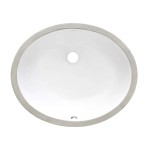Cast Iron Kitchen Sinks: Drop-In Installation
Cast iron sinks have been a kitchen staple for generations, prized for their durability, classic aesthetics, and heat resistance. While undermount sinks have gained popularity in recent years, drop-in cast iron sinks retain a strong market presence, offering a relatively straightforward installation process and a timeless appeal. This article will explore the key features and considerations surrounding drop-in cast iron kitchen sinks.
Key Features of Cast Iron Sinks
Cast iron sinks are constructed by pouring molten iron into a mold, resulting in a thick, robust sink basin. This manufacturing process imbues them with several inherent advantages:
- Durability: Cast iron is exceptionally durable, resisting chips, cracks, and dents.
- Heat Resistance: They can withstand high temperatures without damage, making them ideal for handling hot pots and pans.
- Sound Dampening: The dense material absorbs vibrations and noise from running water and garbage disposals.
- Classic Style: Cast iron sinks offer a timeless aesthetic that complements a variety of kitchen designs.
Understanding Drop-In Installation
Drop-in sinks, also known as self-rimming or top-mount sinks, are designed to be installed into a pre-cut hole in the countertop. The sink's rim rests on the countertop surface, creating a visible lip around the perimeter of the basin. This installation method is generally considered easier than undermount installation, making it a popular choice for DIY projects and budget-conscious renovations.
Advantages of Drop-In Cast Iron Sinks
Combining the benefits of cast iron with the simplicity of drop-in installation offers several advantages:
- Easier Installation: Drop-in sinks require less precise cutting and fitting than undermount sinks.
- Lower Installation Cost: The simplified installation process typically translates to lower labor costs.
- Wide Variety of Styles and Sizes: Drop-in cast iron sinks are available in a broad range of designs to suit diverse kitchen styles.
- Compatibility with Various Countertop Materials: Drop-in sinks can be installed with most countertop materials, including laminate, solid surface, and tile.
Considerations for Choosing a Drop-In Cast Iron Sink
Several factors should be considered when selecting a drop-in cast iron sink:
- Size and Configuration: Carefully measure the available space and consider the number of bowls and drainboard options needed.
- Finish: Cast iron sinks are typically finished with porcelain enamel, which provides a durable and easy-to-clean surface. Various colors are available, with white being the most common.
- Rim Style: The rim of the sink can vary in width and style. Consider the overall aesthetic and how it will integrate with the countertop.
- Weight: Cast iron sinks are heavy, so ensure the countertop and cabinetry can support the weight.
Installation Process Overview
While professional installation is recommended, especially for heavier cast iron sinks, homeowners with some DIY experience can often tackle a drop-in installation. The general process involves:
- Creating a Template: Trace the outline of the sink onto the countertop to create a cutting guide.
- Cutting the Countertop: Carefully cut the opening in the countertop using appropriate tools, such as a jigsaw.
- Applying Sealant: Apply a bead of silicone sealant around the perimeter of the cutout to create a watertight seal.
- Positioning the Sink: Carefully lower the sink into the opening and press down firmly to ensure a good seal.
- Securing the Sink: Most drop-in sinks are secured with clips or fasteners from underneath the countertop.
- Connecting Plumbing: Connect the drain and water supply lines according to the manufacturer's instructions.
Maintenance and Care
Proper maintenance will ensure the longevity and beauty of a cast iron sink.
- Cleaning: Regular cleaning with mild dish soap and water is typically sufficient. Avoid abrasive cleaners and scouring pads, which can damage the porcelain enamel finish.
- Preventing Rust: While the porcelain enamel coating protects the cast iron from rust, chips or scratches can expose the underlying metal. Address any chips promptly with a touch-up kit to prevent rust formation.
- Avoiding Harsh Chemicals: Avoid prolonged exposure to harsh chemicals, which can damage the finish.
Cost Considerations
The cost of drop-in cast iron sinks varies depending on the size, style, and brand. While they can be more expensive than stainless steel sinks, their durability and longevity can make them a worthwhile investment.
- Budgeting: Factor in the cost of the sink, any necessary plumbing supplies, and installation costs if professional installation is chosen.
- Long-Term Value: Consider the long-term value of a durable and aesthetically pleasing sink when evaluating the initial investment.

Kohler Cape Dory 33 In Drop Single Bowl Cast Iron Kitchen Sink With 4 Faucet Holes K Rh5863 0

Why Choose Cast Iron Sinks Ceco

Kohler Riverby Drop In 33 X 22 White Cast Iron Single Bowl 4 Hole Kitchen Sink R5871 0 At Com

Reviews For Kohler Iron Tones S Divide Drop In Undermount Cast 33 Double Bowl Kitchen Sink White Pg 5 The Home

Cast Iron Kitchen Sinks

Kohler Mayfield Drop In 25 X 22 White Cast Iron Single Bowl 3 Hole Kitchen Sink 5964 0 At Com

Kohler Mayfield Drop In Cast Iron 25 3 Hole Single Bowl Kitchen Sink Black K 5964 7 The Home

Cast Iron Kitchen Sinks

Have A Question About Kohler Riverby Drop In Cast Iron 25 1 Hole Single Bowl Kitchen Sink White With Basin Rack Pg 4 The Home

How To Install A Drop In Sink Do S And Dont Youtube







